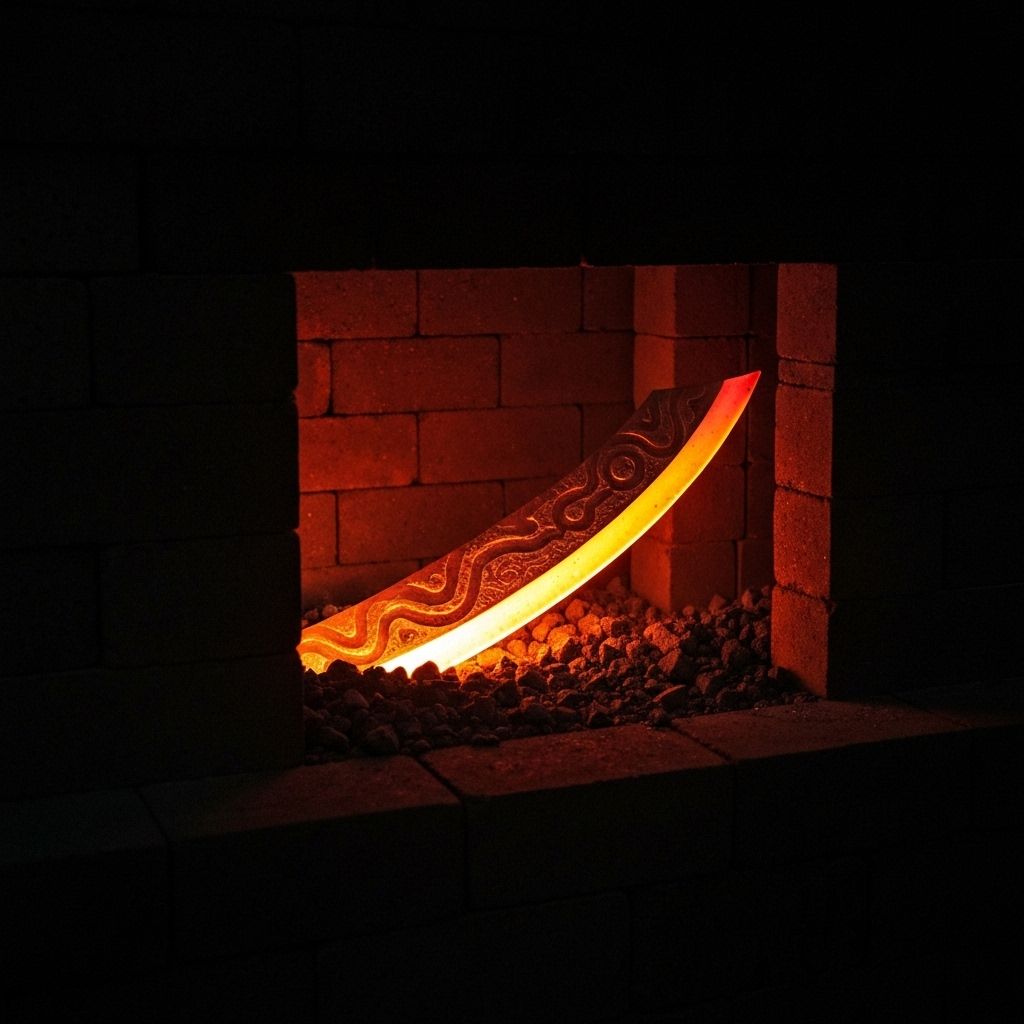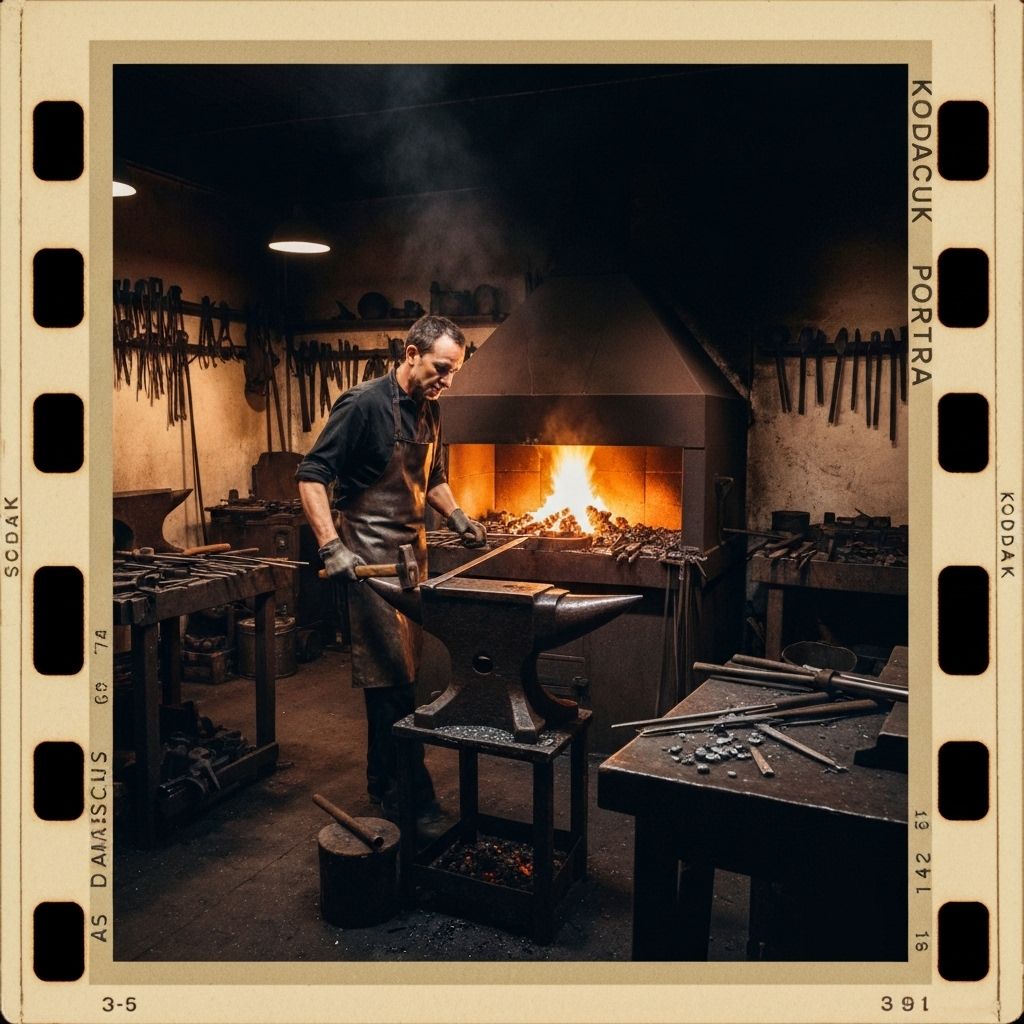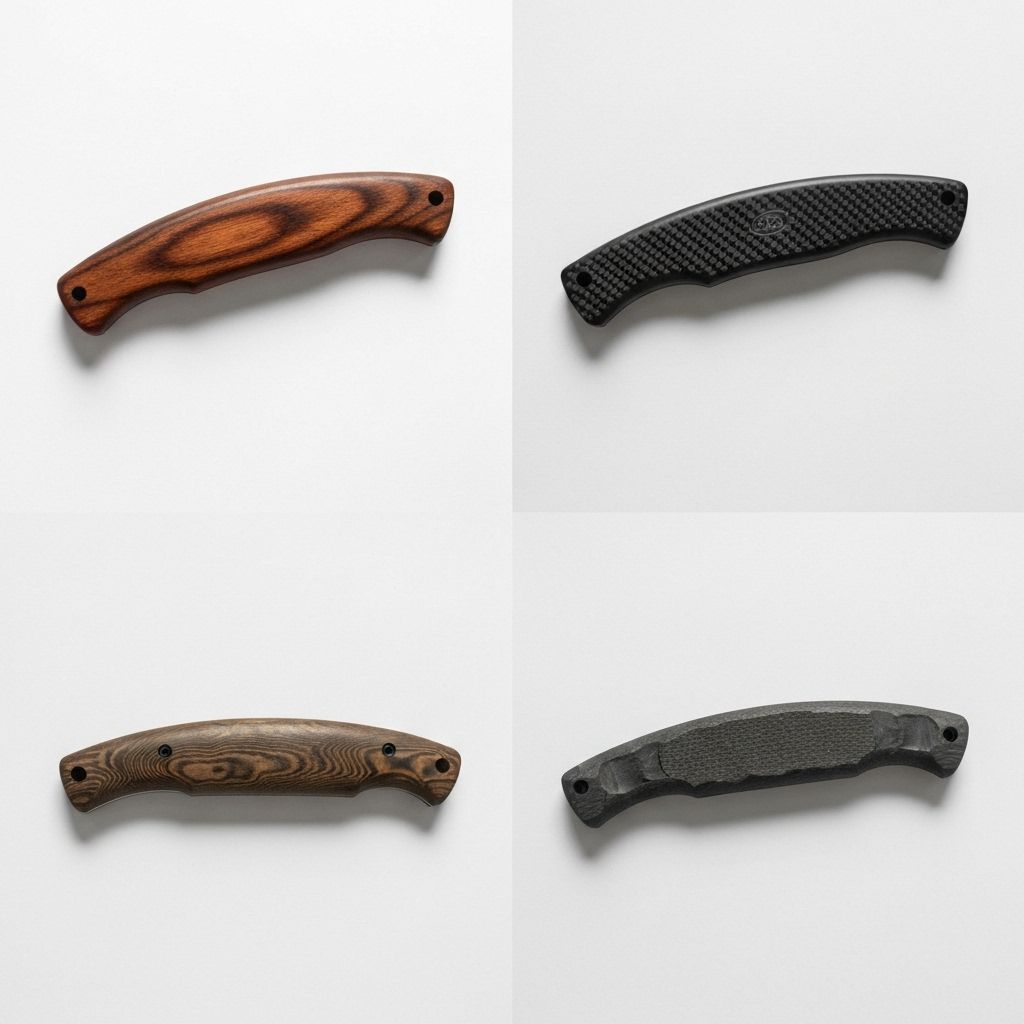Heat Treatment Metallurgy: The Science Behind Blade Hardness
Discover how precise heat treatment transforms steel into blades with optimal hardness, toughness, and edge retention.
- Answer the main question in one sentence.
- Give the best pick and why in one line.
- Link to the product or guide for next step.

Heat treatment is the critical process that determines a blade's performance characteristics. Through controlled heating and cooling, we manipulate steel's crystalline structure to achieve the ideal balance of hardness and toughness.
Austenitization occurs at 1050-1095°C, depending on steel composition. At this temperature, carbon dissolves into the iron matrix, creating a uniform structure. Precise temperature control is essential—even 10°C variation affects final properties. We use computer-controlled furnaces with ±2°C accuracy.
Quenching rapidly cools the blade, trapping carbon in a supersaturated solution that creates martensite—the hardest steel structure. Quench medium selection affects cooling rate: oil provides moderate cooling suitable for high-carbon steels, while water or brine creates faster cooling for lower-carbon alloys.
Tempering reduces brittleness while maintaining hardness. Heating to 175-205°C allows controlled stress relief without sacrificing edge retention. Multiple tempering cycles—typically three—ensure uniform properties throughout the blade.
Cryogenic treatment at -196°C (liquid nitrogen temperature) converts retained austenite to martensite, increasing hardness by 1-2 HRC points while improving wear resistance. This additional step distinguishes premium blades from standard production.
// RELATED_ARTICLES

The Art of Damascus Steel: Ancient Techniques Meet Modern Precision
Explore the centuries-old process of creating Damascus steel and how we've refined it for contemporary culinary applications.

Handle Materials: Engineering Ergonomics and Durability
Explore the material science behind knife handles and how different materials affect performance and longevity.